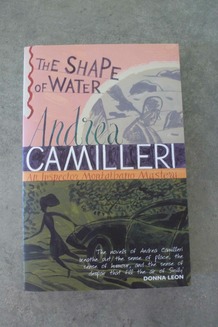Sunday, 10 October 2010

Given Hughesy’s view that the Montalbano stories should be read in sequence (won’t do a lot of harm if you don’t, but works better, I think, in the right order) your starting point should be The Shape of Water, where the body of engineer Silvio Luparello, a local politician, is found, head thrown back and trousers lowered. in the Pasture, a rubbish-strewn, wind-swept site frequented by drug dealers, prostitutes and their clients.
The body is found by employees of the Splendour Refuse Collection Company (love that name!), who are, predictably, interested in gaining any benefit they can from the discovery. As news of the death spreads, rumours begin.
Given the circumstances in which the body was found and deceased’s status as a local mover and shaker, it’s hardly surprising that the authorities want things swept under the carpet]. The coroner’s verdict is death from natural causes, a massive heart attack brought on by over-exertion and when a powerful politician, a judge, and a bishop all apply pressure to close the investigation Montalbano becomes suspicious, manages to get a 48-hour extension and sets out to find what really happened.
Luparello’s death comes after nearly twenty years of political manoeuvring, through which the deceased had gained control of the local branch of his political party and secured an appointment as provincial secretary, but Pietro Rizzo, the dead man's closest political ally, is apparently undisturbed by Luparello's death. Strange.
Montalbano, in contrast, doesn’t care who he offends as long as he can solve the crime and as the local television news sanitises the incident and the crime lab scrambles for answers, he tries to assemble a puzzle whose pieces don’t seem to fit together.
In the process, Montalbano picks his way through a maze of high-level corruption and carefully planted false clues, confronting an establishment where the lines between politics and organised crime (the new Mafia) take on, like water, the shape of the container that holds them.
The pieces fit together in the end, of course, but you expected that. Not much changes as a result, but that, too, comes as no surprise.